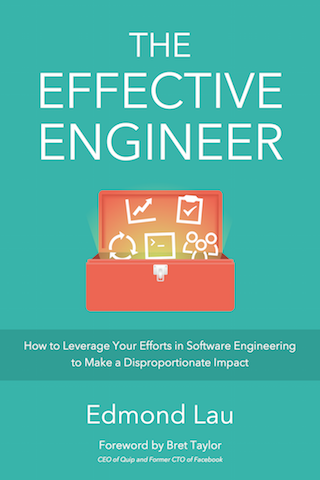What Makes A Good Engineering Culture

One of my favorite interview questions that I ask engineering candidates is to tell me about one thing they liked and one thing they disliked about the engineering culture at their previous company. I’ve interviewed over 500 people – many of them from top tech companies like Facebook, Google, Amazon, Palantir, and Dropbox – and over time, this interview question has given me a sense of what good engineers look for and what they’re trying to avoid. Reflecting back on the interview responses and on my own experiences from the past seven years working across Google, Ooyala, and Quora, I’ve distilled ten things that a team can do to build a good engineering culture.
1. Optimize for iteration speed.
Quick iteration speed increases work motivation and excitement. Infrastructural and bureaucratic barriers to deploying code and launching features are some of the most common and frustrating reasons that engineers cite during interviews for why they’re leaving their current companies.
Organizationally, quick iteration speed means giving engineers and designers flexibility and autonomy to make day-to-day decisions without asking for permission. While I was at Google, any user-visible change to search results, even for low-traffic experiments, required Marissa Mayer’s approval at a weekly UI review. Needless to say, while this allowed Google to protect its search brand, it significantly hampered innovation. Optimizing for iteration speed also means that there are well-defined processes for launching products, so that cancellations don’t happen unexpectedly after significant time investment.
Infrastructurally, optimizing for iteration speed means building out continuous deployment to support rapid validation, high test coverage to reduce build and site breakages, fast unit tests to encourage people to run them, and fast and incremental compiles and reloads to reduce development time. Continuous deployment, where commits go immediately to production, deserves a special mention. Prior to using it at Quora, it would’ve been hard for me to internalize that the benefits it provides toward iteration speed outweigh the risks of site breakages, at least for small engineering teams. People are more excited about features and incentivized to fix bugs because changes see live traffic quickly. It’s also significantly easier to reason about and pinpoint the source of errors for a narrow window of committed code than a week or more’s worth of batched changes.
Team-wise, fast iteration speed means having a set of strong leaders to help coordinate and drive team efforts. Key stakeholders in a decision need to decide effectively and commit to their choices. To borrow a phrase from Bill Walsh, a leader who coached the 49ers to 3 Super Bowls, strong leaders need to “commit, explode, recover,” which means committing to a plan of attack, executing it, and then reacting to the results. 1 A team crippled with indecisiveness will just cause individual efforts to flounder.
2. Push relentlessly toward automation.
In his tech talk “Scaling Instagram”, Instagram co-founder Mike Krieger cited “optimize for minimal operational burden” as a key lesson his 13-person team learned in scaling the product to tens of millions of users. 2 As a product grows, so does the operational burden per engineer, as measured by the ratio of users to engineers or of features to engineers. Facebook, for example, is well-known for touting scaling metrics like supporting over 1 million users per engineer. 3
Automating solutions and scripting repetitive tasks are important because they free up the engineering team to work on the actual product. Ensuring that services restart automatically if possible when they fail and that services are easily and quickly replicated at peak traffic is the only sane way to manage complexity at scale. In the short-term, there’s always the tempting tradeoff of applying a quick band-aid manually rather than automating and testing a long-term fix.
Etsy’s motto of “measure anything, measure everything” 4 and its support of open-source monitoring and charting tools like graphite and statsd highlight an important aspect of automation – that automation must be driven by data and monitoring. Without monitoring and logs to know what, how, or why something is going wrong, automation is difficult. A good follow-up motto would be to “measure anything, measure everything, and automate as much as possible.”
3. Build the right software abstractions.
My MIT Professor and undergraduate research advisor Daniel Jackson captures the importance of software abstractions well 5:
“Pick the right ones, and programming will flow naturally from design; modules will have small and simple interfaces; and new functionality will more likely fit in without extensive reorganization. Pick the wrong ones, and programming will be a series of nasty surprises: interfaces will become baroque and clumsy as they are forced to accommodate unanticipated interactions, and even the simplest of changes will be hard to make.”
Part of what allowed thousands of engineers to build scalable systems at Google is that really smart engineers like Jeff Dean and Sanjay Ghemawat built simple but versatile abstractions like MapReduce, SSTable, Protocol Buffers, and the like. Part of what allowed Facebook engineering to scale up is the focus on similarly core abstractions like Thrift, Scribe, and Hive. And part of what allowed designers to build products effectively at Quora was that Webnode and Livenode were fairly easy to understand and build on top of.
Keeping core abstractions simple and general reduces the need for custom solutions and increases the team’s familiarity and expertise with the common abstractions. The growing popularity and reliability of systems like Memcached, Redis, MongoDB, etc. have reduced the need to build custom storage and caching systems. Funneling the team’s focus onto a small number of core abstractions rather than fragmenting it over many ad-hoc solutions means that common libraries get more robust, monitoring gets more intelligent, performance characteristics get better understood, and tests get more comprehensive. All of this helps contribute to a simpler system with reduced operational burden.
4. Develop a focus on high code quality with code reviews.
Maintaining a high-quality code base increases the productivity of the entire engineering team. Cleaner code is easier to reason about, quicker to develop on, more amenable to changes, and less susceptible to bugs. A healthy code review process makes this possible.
Establishing a process for timely code reviews, whether pre-commit or post- commit, improves code quality in a few ways. First, the peer pressure of knowing that someone will be reviewing your code and that committing poorly written code will likely let down your teammates is a strong deterrent against hacky, unmaintainable, or untested code. Second, code reviews provide opportunities for the code reviewer and author to learn from each other to write better code.
If the code reviews are easily accessible to other members of the engineering team, then the reviews also bring along the benefits of a) increasing accountability for reviewing code in a timely manner, b) allowing team members – particularly, newer ones – to model off of others’ good code reviews, and c) speeding up the dissemination of best coding practices.
Counterarguments that nimble teams don’t have time to spend on code reviews ignore the technical debt that can easily accumulate from poorly written code. Ooyala, in its very early startup days, used to optimize for cranking out as many features as possible, with an absence of code reviews; the result was that while the initial product may have gone to market more quickly, the resultant code became painful to modify, and we spent over a year just rewriting brittle code to eliminate technical debt.
Google, at its size, does pre-commit code reviews for all code, but smaller teams don’t need to be as comprehensive or strict, and not all code needs to be reviewed with the same rigor. Ooyala later adopted post-commit reviews over email for core or risky changes while I was there. At Quora, we conducted all code reviews in Phabricator, mostly post-commit, and applied different standards for model or controller code and view code; for sensitive code or for code from newer engineers, we either did pre-commit reviews or tried to review them within a few hours of the code being submitted.
5. Maintain a respectful work environment.
Respect among peers forms the foundation for any type of open communication. A place where people feel comfortable challenging each other’s ideas is one where sound ideas get forged through debate. A place where people easily get offended is one where crucial feedback gets withheld.
In 1948, Alex Osborn outlined the familiar brainstorming approach that’s been popular in work environments for the past few decades, where participants come together, set aside criticism and negative feedback, and collectively pool together creative ideas without fear of being judged. 6 Respectful deferment of judgment is key to this type of brainstorming session. Recent psychology research has started to overturn Osborn’s approach, suggesting that encouraging debate in brainstorming sessions actually helps to avoid groupthink and generates more effective ideas. In light of this research, a respectful environment becomes even more critical so that attacks are directed toward ideas rather than being ad-hominem. 7
Engineering often spans a wide range of areas (systems, machine learning, product, etc.) and not everyone has the same expertise in each area. A strong team in fact probably ought to have individuals who are uniquely strong in certain areas even if they end up being deficient in others. This sometimes makes it tricky for say, a systems engineer to evaluate the proficiency of a product engineer, but it’s important in a healthy engineering culture to respect those differences and to not judge solely based on your own strengths.
6. Build shared ownership of code.
While it’s natural for individuals to become proficient in various parts of the code base or infrastructure, no one person should feel that they own or are the sole maintainer of any one piece. While having individuals become experts that own certain areas for a year or more might increase effectiveness in the short run, this approach ends up hurting in the long run.
Organizationally, shared code ownership provides three benefits. First, keeping the bus factor 8 greater than one relieves stress from the maintainer and reduces risk for the team in case the maintainer leaves. It also makes it difficult for that one person to take worry-free time off. I sure don’t miss the days when I was the sole maintainer of Ooyala’s logs processor and got paged while I was on vacation hiking on volcanoes in Hawaii.
Second, shared ownership empowers engineers who aren’t knee-deep in the particular area to contribute fresh insights. It frees engineers from the sense that they’re stuck on certain projects and encourages them to work on a diversity of projects, which helps to keep work interesting and boosts employee learning and motivation. In the long run, it reduces organizational risk that some engineer feels stagnated and decides to leave. 9
Third, shared ownership also sets the foundation for having multiple team members swarm (a technique from agile development) together on a high-priority problem when necessary to finish a strategic goal more quickly. With siloed ownership, the burden typically falls on one or two people.
One mistake that many engineering organizations make too early on is dividing the entire team into subteams with tech leads when the team’s still small. Subteams build walls of ownership that reduce incentive to cross those walls, since individuals will likely be assessed by their subteam’s objectives. Ooyala had subteams while I was there, and one thing I missed out on was the opportunity to work with some folks on other teams; they’ve since adopted an agile development process with a much larger focus on shared code ownership that I’ve heard has made large strides in work happiness and productivity. One aspect of the early days of Quora that I enjoyed was that we emphasized projects over teams, and I had an opportunity to work on projects ranging from user growth, machine learning, moderation tools, recommendations, analytics, site speed, and spam detection.
7. Invest in automated testing.
Unit test coverage and some degree of integration test coverage is the only scalable way of managing a large codebase with a large group of people without constantly breaking the build or the product. Automated testing provides confidence in and meaningful protection against large-scale refactorings that are required to improve code quality. In the absence of rigorous automated testing, the time required for manual testing either by the engineering team or by an outsourced testing team easily becomes prohibitive, and it’s easy to fall into a culture of fear of improving a piece of code just because it might break.
In practice, automated testing is a requirement for making continuous deployment work as the team grows. Codebase size grows over time as the product grows, but average familiarity with the codebase by team members decreases as new people join. Testing and validation are most easily done by the original code authors when the code is fresh in their minds than by those who try to modify the code months or years later. Encouraging a strong unit testing culture shifts the validation responsibility toward the authors.
8. Allot 20% time.
Gmail found its roots in Paul Buchheit’s 20% project, and he hacked together the first version in a single day. 10 Google News, Google Transit, and Google Suggest also started and launched as 20% projects. I used 20% time while at Google to write a python framework that made it significantly easier to build search page demos. While Google’s 20% time may be less productive now than during the early days of the company 11, the notion of letting engineers spend 20% of their time working on something not on their product map remains a cradle of innovation for smaller engineering organizations.
Ooyala didn’t officially have 20% time while I was there, but I took some anyway and wrote a command-line build tool for Flex and Actionscript that sped up the team’s build times. I finished it just as Adobe’s Flex Builder tool chain started to degrade, and the tool remained in use even as the engineering team more than tripled in size. Atlassian adopted 20% time after experimenting it for year. 12 A variation of 20% time that Facebook’s fond of and that Ooyala added later is periodic hackathons – all-night events where the rule is that you can work on anything except your normal project. 13
Top-down approaches to product planning, while necessary for focusing the overall direction of the company, can’t account for the multitude of ideas that might arise from engineers closer to the ground. As long as engineers are accountable for their 20% time and focus on what can be high-impact changes, these projects can lead to large steps forward in progress. Without official 20% time, it’s still possible but much more difficult for engineers and designers to try out crazy ideas – the dedicated ones basically have to find weekends or vacation days to do it.
9. Build a culture of learning and continuous improvement.
Learning and being sufficiently challenged are requirements for what psychology professor Mihaly Csikszentmihalyi calls a state of “flow”, where someone is so completely focused and motivated by what they’re doing that they even lose track of time. 14 The direct and immediate feedback loop provided by faster iteration cycles is another requirement.
Weekly tech talks provide forums for engineers to share their designs or what they’ve built, creating an opportunity for engineers to take pride in their work and for the team to learn more outside their immediate scope of work. Documenting processes internally like how a email service works or how to make ranking changes to a search service also empowers engineers to learn and explore new things on their own, nicely complementing 20% time. At Quora, we did this by running an internal instance of Quora where we asked product- and development-related questions.
A corollary of building a culture of learning is focusing on mentoring and training to make sure that everyone has the basic algorithms, systems, and product skills necessary for success. The more an engineering organization grows and the more effort gets spent on recruiting (particularly college recruiting), the more effort needs to be invested into mentoring and training. It might seem burdensome for a single mentor to spend an hour per day for a new hire’s first 4 weeks on the job, but that investment represents less than 1% of the total time the new hire will spend in a year and has significant leverage in determining whether the person is set up for success.
10. Hire the best.
Hiring the best is the foundation for many of the other philosophies listed. It’s hard to respect someone if you think they’re a B-level engineer. It’s hard to give someone autonomy in product development if you don’t trust their product instincts. It’s hard to recognize the right abstraction to build without enough engineering experience. It’s easy to fall into a trap of building something complex without other smart people to challenge your ideas and drive you toward simplicity.
There’s a saying around Silicon Valley, coined by Steve Jobs, that “A players hire A players. B players hire C players.” 15 16 Focusing on recruiting and hiring the right people is hard but critical to effectively growing an engineering organization. Yishan Wong, who previously was an engineering manager and director at Facebook, argued that hiring has to be the number one priority for everyone in the engineering organization, not just for managers, but for engineers as well. 17 He also quite rightly points out the difference between “hiring the best” and “hiring the best candidate that you’ve interviewed.”
In the early days of Ooyala, we were so overwhelmed with the queue of inbound customer work that we nearly caved in to lowering our hiring bar so that we could hire enough people to get all our work done. I’m glad that we didn’t, as the technical debt from lower quality code and weaker engineers on the team would’ve ended up hurting the team and the product.
Building a good engineering culture is certainly a lot of work, but the resulting work environment is well worth it.
This blog post was based on an answer that I originally wrote on Quora.
Looking for a guest speaker on engineering culture for a tech talk or engineering offsite? Contact me about speaking engagements.
Bill Walsh, The Score Takes Care of Itself: My Philosophy of Leadership. ↩
Mike Krieger, “Scaling Instagram.” ↩
Robert Johnson, “Scaling Facebook to 500 Million Users and Beyond.”, Facebook Engineering Blog. ↩
Ian Malpass, “Measure Anything, Measure Everything.”, Code as Craft. ↩
Daniel Jackson. Software Abstractions: Logic, Language, and Analysis ↩
Alex Osborn. Your Creative Power. ↩
Jonah Lehrer, Groupthink., The New Yorker. ↩
“What is “bus number” and why do you want it to be greater than 1?”, Quora. ↩
“How do experienced engineers at startups avoid stagnation due to the overabundance of operational issues?”, Quora. ↩
Paul Buchheit, “Communicating with Code.” ↩
“Engineering in Silicon Valley: How does Google’s Innovation Time Off policy work in practice?”, Quora. ↩
Colleen Taylor, “Inside Facebook’s final Palo Alto Hackathon.”, GigaOM. ↩
Mihaly Csikszentmihalyi, Flow: The Psychology of Optimal Experience. ↩
What is an “A Player”?, Quora. ↩
Guy Kawasaki, “What I learned from Steve Jobs.” ↩

“A comprehensive tour of our industry's collective wisdom written with clarity.”
— Jack Heart, Engineering Manager at Asana
“Edmond managed to distill his decade of engineering experience into crystal-clear best practices.”
— Daniel Peng, Senior Staff Engineer at Google

“A comprehensive tour of our industry's collective wisdom written with clarity.”
— Jack Heart, Engineering Manager at Asana
“Edmond managed to distill his decade of engineering experience into crystal-clear best practices.”
— Daniel Peng, Senior Staff Engineer at Google


















Leave a Comment